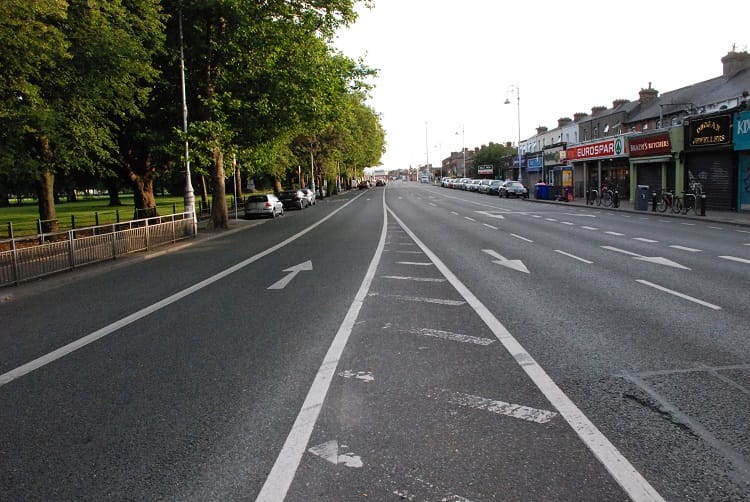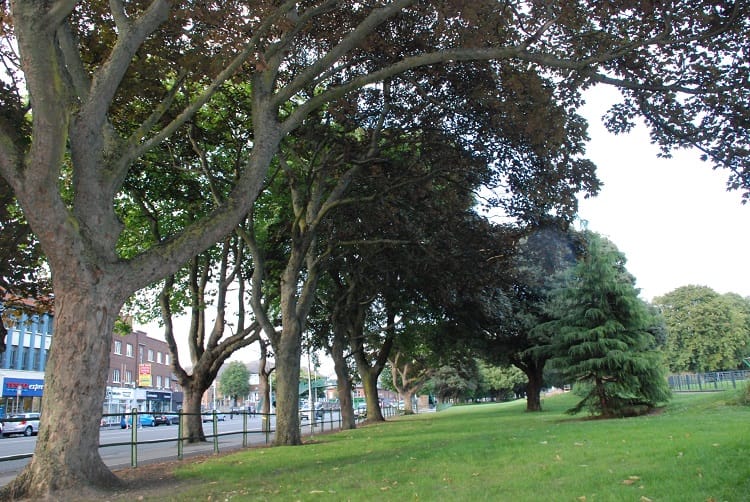What’s happened with Manna’s plan to expand its drone delivery service across Dublin?
It still only has one base, in Dublin 15, with planning permission – and that’s due to expire this year.
Two groups of councillors recently voted on the current design for the track which runs from Clontarf to the city centre. One okayed it, the others said it wasn’t good enough.

The future of the Clontarf-to-Amiens-Street cycle track looked uncertain last Tuesday, after a meeting of Dublin City Council’s Central Area Committee.
Following a public-consultation period – from January to March – the council’s Engineering Department is proposing one-way cycle tracks on both sides of the road.
The plan would mean eliminating some parking spaces and cutting down several mature trees along Fairview Park.
But while councillors on the Central Area Committee rejected this plan, councillors in a different part of the city, on the North Central Area Committee, backed it.
The track runs through both areas.
After the thumbs down at the Central Area Committee meeting, Chris Manzira – the council senior engineer who presented the plan – had sobering words for those at the meeting.
“We’re at a stage where we may have to reconsider the entire project,” he said.

One Way Forward
The Clontarf-to-Amiens-Street cycle track has been in the making, and controversial, for some time.
It would be more than 2.5 kilometres long, and would form part of the proposed Sutton-to-Sandymount (S2S) cycleway.
After years of back and forth, council management presented councillors with the new plan last Tuesday.
But some Central Area councillors at last Tuesday’s meeting felt the council’s Engineering Department hadn’t done enough to solve the three major issues that arose from the public consultation.
The “majority” of submissions from the public consultation favoured a two-way, segregated, cycle track running from Alfie Byrne Road in Clontarf to Amiens Street in the city centre, said Manzira.
But the council’s Engineering Department instead opted for the two one-way tracks, as shown in Manzira’s Clontarf-to-City-Centre-Cycle-Route-Part-8-Update-1.pdf”>report.
The logic is that a one-way track allows better access for cyclists to shops and businesses on both sides of the street; that cyclists can continue through uncontrolled junctions without the need to introduce further junctions; and that delays at traffic signals are reduced.
In the one-way-track scenario, because cyclists are travelling in the same direction as other road users, there is also less risk of conflict, according to the report.
Green Party Councillor Ciarán Cuffe said he was disappointed that the two-way option was rejected despite being more popular. “I feel the council didn’t give any detailed rebuttal of a two-way, segregated cycle track,” he said.
Manzira’s presentation “was all about how brilliant a one-way, segregated, cycle track would be and five bullet points saying ‘no’ to a two-way track,” says Cuffe.
Cuffe has now requested “a detailed appraisal” of both options be drawn up by the council’s Engineering Department. “I’m not convinced that you’ve looked at them in enough detail,” he said to Manzira.
The two-way cycle track option, on one side of the road, is something Colm Ryder and the Dublin Cycling Campaign have championed since the Clontarf-to-Amiens-Street cycle track scheme was first floated back in 2012.
Whatever about the scheme as it’s proposed now, the scheme that went out for public consultation was “deficient” in the first place, says Ryder. “Essentially we’ve had a problem with the city council on this route from day one. The process has been the problem,” he says.
The council’s plan for the cycle track wold eliminate 48 car-parking spaces. Independent Councillor Nial Ring is concerned about the revenue this would cost the council.
“The 400 parking spaces that we’ve lost because of the Luas works is costing us €1.8 million in lost income per annum,” he says.
Sinn Féin Councillor Janice Boylan is more concerned with parking accessibility for people at the Amiens Street/Talbot Street end of the route.
“I understand trying to encourage people to cycle, to use public transport, but we have to be aware of the people who need to drive their cars, people with wheelchair access, people with young children,” she says.
Workers’ Party Councillor Eilís Ryan disagrees. As she sees it, if the council wants to promote “a sensible transport policy”, then the continued loss of revenue from parking is an inevitability.
“One of the reasons that we have pay and display parking in the city is because we want to incentivise people not to drive,” she says. “So over time, as people change that behaviour, there has to be that loss of revenue.”

Third: Lost Trees
The loss of 62 trees – 49 along Fairview Park – was another sore point for some councillors. Ring said many of the trees are over 100 years old.
In order to facilitate a segregated, two-way cycle track along Fairview Park, the council would have to take over a vehicular traffic lane.
They’re unwilling to do this, says Cuffe. “Instead they want to widen the road in Fairview Park and take out a significant number of mature trees,” he says.
However, the council plans to replant 160 trees along the cycle route.
The councillors of the Central Area Committee rejected Manzira’s report. In other words, they did not endorse the current design.
But since the proposed route crosses two council areas, the councillors of the North Central Area Committee had to consider Manzira’s report too. This Tuesday, they endorsed it.
The two committees now look set to meet before the end of July to hash out the issues before submitting the plan to a full council meeting in September, says Cuffe.
Some councillors feel that the proposal is good enough.
The route towards Amiens Street from Clontarf is among the busiest commuter routes in Dublin, says North Central Fine Gael Councillor Naoise Ó Muirí.
With various competing modes of transport, including a significant number of bus lanes in and out of the city centre, it was never going to be easy, he says.
But Ó Muirí is convinced that a one-way cycle track is the only option worth pursuing. “The risk for us is that we wait for a great scheme, that we reject a good scheme in favour of a great scheme that may never happen,” he says.
Others think it must be better.
The route is one of the busiest cycle routes in Dublin, “if not the busiest”, says Cuffe. And Dublin’s cyclists deserve better, he says.
Cuffe thinks the best approach, at this stage, is to go back to the drawing board and work through the issues. The council has simply not properly engaged with all the stakeholders, he says.
Says Cuffe of Manzira’s report: “All too often we are presented with a ‘Vote for it or reject it,’” he says. “Instead, I think there should be a series of meetings that show a proposal being refined.”
Ryder, of Dublin Cycling Campaign, says it’s unfortunate that the route now faces further delays. But it’s not “the best project”, he says. “We want it to happen, of course. But not in its present state.”